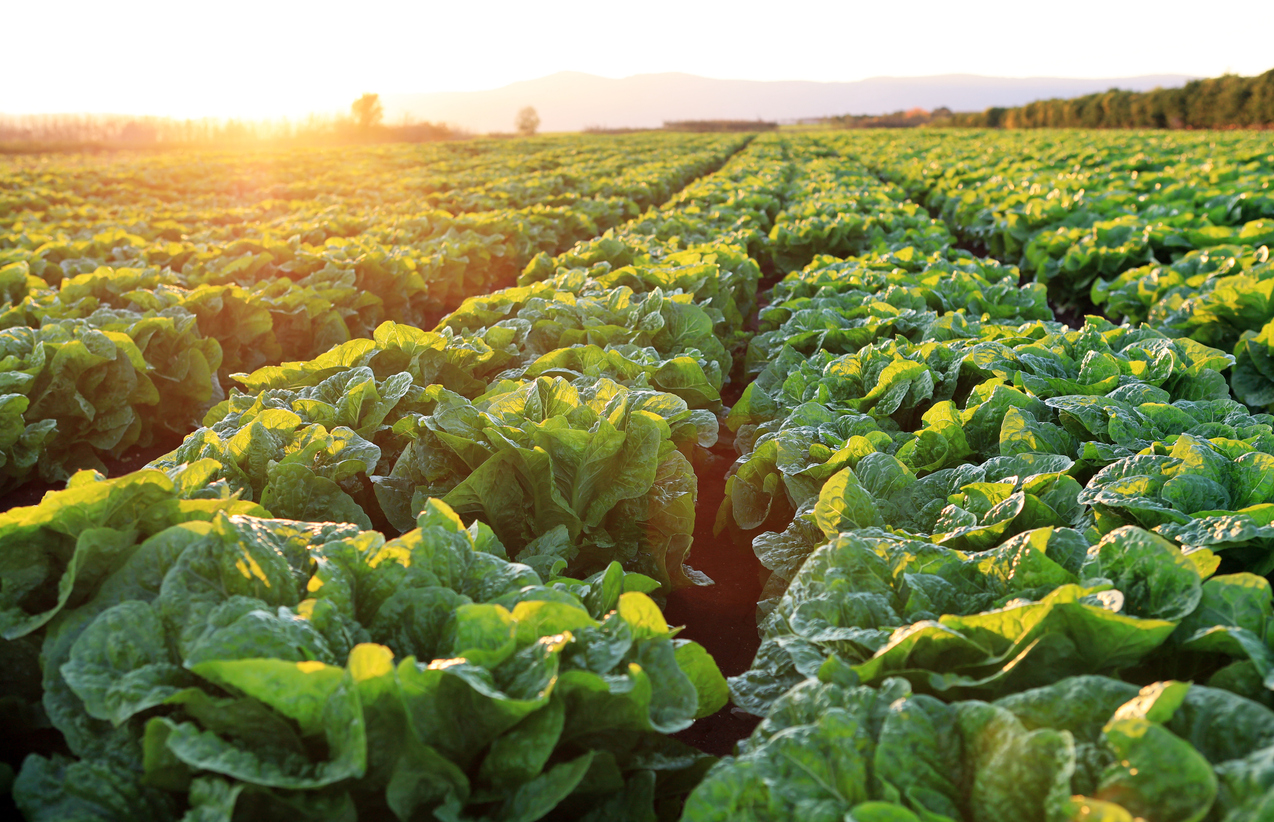
Lettuce Biofortified With Folate Stable in Field Conditions
April 16, 2025| |
Embrapa Genetic Resources and Biotechnology in Brazil reports stable folate biofortification in lettuce under field conditions for two years. The results are published in Transgenic Research.
Folate, also known as vitamin B9, is an essential nutrient that plays a vital role in several bodily functions. Deficiency in folate may cause health problems, including megaloblastic anemia, neural tube defects in the developing fetus, and increased risk of cardiovascular diseases. Thus, there has been great interest among researchers in increasing the folate levels in food through conventional and molecular breeding.
Embrapa researchers developed transgenic lettuce plants by manipulating the folate synthesis pathway, particularly by expressing the GTP-cyclohydrolase I and aminodeoxychorismate synthase coding sequences from Arabidopsis. The transgenic plants were grown in greenhouse conditions, and then in field conditions for two years. Findings from the field tests indicated stable folate biofortification in the transgenic plants.
Results showed that the biofortified lettuce exhibited up to 3.4 times more folate than the non-transgenic lettuce plants and 1.9 times more folate than spinach, one of the vegetables known to have high folate content. According to the researchers, a folate-biofortified lettuce serving would provide about 36 to 64% of the recommended daily intake.
Read more in Transgenic Research.
| |
You might also like:
- Consumer Acceptance of Folate-Biofortified GM Lettuce in Brazil
- Scientists Develop Gene-Edited Lettuce to Fight Micronutrient Deficiencies
- Researchers Develop Biofortified Golden Lettuce with 30 Times More Beta Carotene
Biotech Updates is a weekly newsletter of ISAAA, a not-for-profit organization. It is distributed for free to over 22,000 subscribers worldwide to inform them about the key developments in biosciences, especially in biotechnology. Your support will help us in our mission to feed the world with knowledge. You can help by donating as little as $10.
-
See more articles:
-
Plant
- Research Reveals Cry1Ab Kills Pests Through Two Pathways; Increasing Sustainability of GE Crops
- Two Insect-resistant Maize Events Reduce Fumonisin Pollution in China
-
Animal
- ISAAA Webinar Explores Animal Biotech Regulations in the Philippines
-
Food
- FSANZ Approves First Cell-Cultured Food to be Marketed and Sold in Australia and New Zealand
- Lettuce Biofortified With Folate Stable in Field Conditions
-
Health
- Scientists Develop New Gene Editing Tool that Replaces Entire Genes
-
Environment
- Genome Sequences for Five Duckwood Species Reveal Potential for Food and Fuel Source
- Water Stress Improves Triacylglycerol Production in High-leaf Oil Tobacco Plants
-
Read the latest: - Biotech Updates (November 26, 2025)
- Gene Editing Supplement (November 26, 2025)
- Gene Drive Supplement (February 22, 2023)
-
Subscribe to BU: - Share
- Tweet

